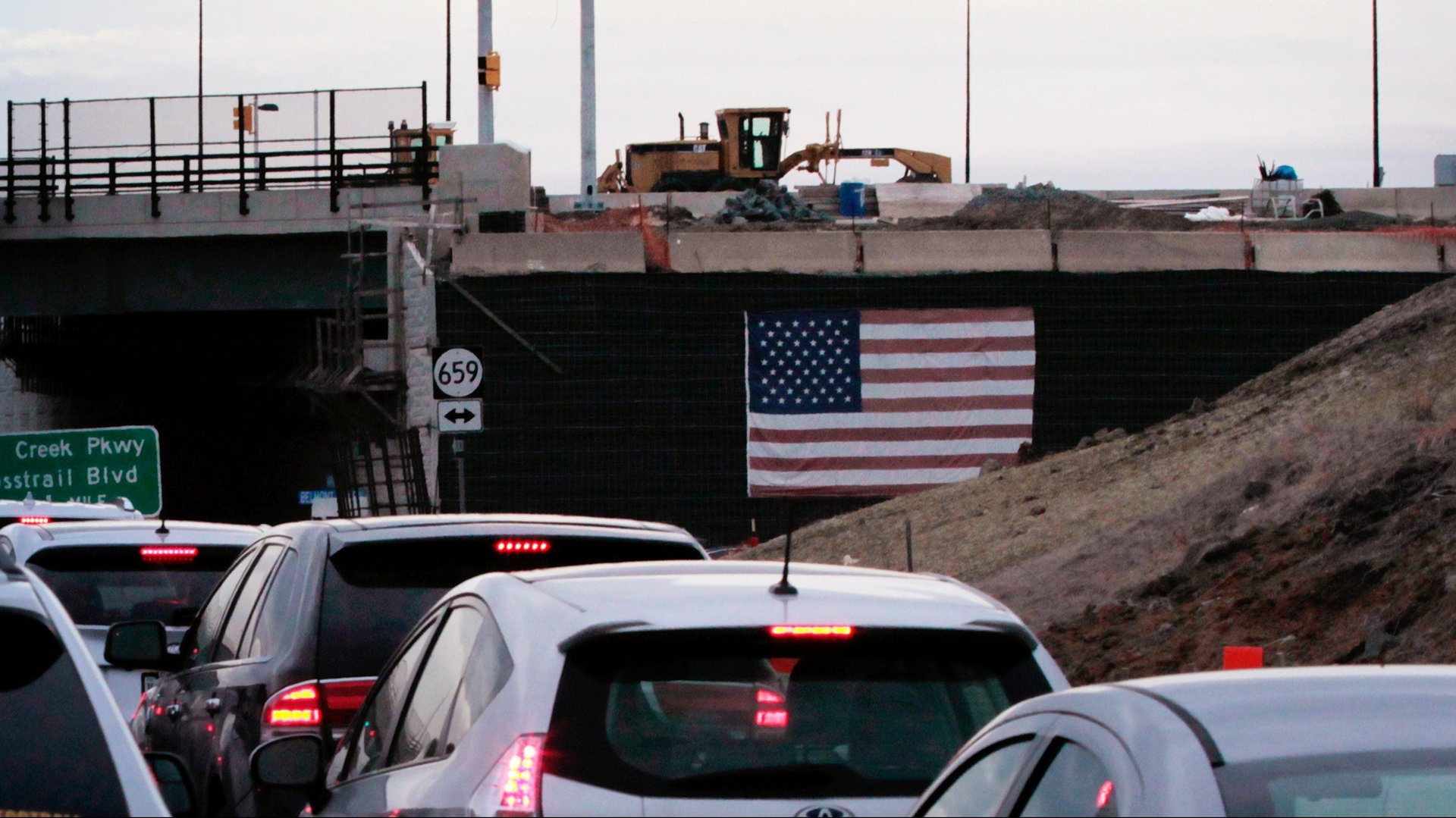Activists are adding up the dire climate costs of US highway expansion
The transportation sector is the greatest contributor to US carbon emissions—and just as important as vehicles are the roads and highways they travel on.


The transportation sector is the greatest contributor to US carbon emissions—and just as important as vehicles are the roads and highways they travel on.
Experts have warned for years that highway travel will need to decrease for the US to meet its stated climate goals. And yet highway expansion projects abound. Authorities in southern California have been at work on a $2 billion widening project since 2011, for instance, while officials in Oregon, approved a project this year to widen a section of a highway through the city of Portland, over the objections of community and environmental activists.
Now, as state transportation planners face an opportunity to decide how the next generation of US transportation infrastructure will be built, a new tool puts a number to the climate costs of highway expansion.
A carbon emissions calculator for highway expansions
The State Highway Induced Frequency of Travel (SHIFT) calculator, developed by the Rocky Mountain Institute and a coalition of environmental and transportation advocacy organizations, measures the impact of highway expansion in more than 300 metropolitan areas around the US by calculating the number of cars that would be added to roads with expansion, and the tons of carbon dioxide they would emit.
The impact of expansion is greatest where traffic is already heavy; for example, adding two more lanes to a five-mile stretch of highway in the Los Angeles area leads to 103 million more vehicle miles traveled per year and up to 1 million more metric tons of C02 emissions by 2050. Adding two lanes to a highway in Toledo, Ohio, on the other hand, only leads to 40 million more vehicle miles, and a fraction of the emissions.
If the US passes the $1 trillion federal infrastructure bill (currently held up in Congress, attached to a larger social-spending bill), transportation departments around the country will find themselves with eagerly awaited money to spend on roads and highways. But with other historic allocations for rail and other cleaner forms of transport, the feds are offering another path forward, that is less dependent on cars. Ultimately, the decision to embrace a multimodal approach or double down on highways lies with states themselves.
Why wider highways don’t solve traffic congestion
As far back as the 1960s, whenever highways in US cities have been choked with traffic, transportation departments have alleviated the pressure by widening them. But research has shown that giving cars more room to move only makes congestion worse, thanks to a principle called induced demand. It’s when increased capacity on a road increases the number of people willing to use it.
“It basically means, ‘if you build it, they will come,” says Julia Thayne DeMordaunt, head of the Rocky Mountain Institute’s urban transformation program. “If you have more lane miles, you’re actually going to have more cars in the long run, not fewer.”
While additional lanes can ease traffic in the short term, the effect is temporary. Within a few years, demand rises back up to meet capacity, and traffic jams all over again.
Widespread proof that induced demand worsens traffic hasn’t slowed some cities from expanding anyway. The Texas Department of Transportation is in the midst of a controversial $4.9 billion project that will add lanes to a highway through downtown Austin. The SHIFT calculator finds that adding approximately 32 lane miles of highway to the Austin area, as this latest project proposes, would mean up adding to 12,400 passenger cars per year, generating up to 3 million metric tons of carbon dioxide by 2050.
With new federal funding, a chance to think beyond highways
The infrastructure bill would include $110 billion in new funding for roads, bridges, and highways. In many states, the top spending priority will be to repair and maintain existing roads and highways. But in some places, expansion is likely a prime target. An analysis by the Washington Post shows that in 2019, 11 states put more than half of their spending on roads toward expansion projects, not repair. In all, $19 billion was put toward expansion across the country.
The new bill includes a big allocation for roads and highways, but also includes upwards of $65 billion in funding for other forms of transportation, like buses, rail transit, and intercity rail, as well as alternatives like biking and walking, unprecedented investments at the federal level. Incidentally, it’s these alternatives to driving that are more effective at reducing road congestion, says Thayne DeMordaunt. Experiences in Paris, San Francisco, and Seoul back this up: all three cities have undergone highway removal processes, and found that traffic didn’t get worse because people just chose other forms of transportation.
US states and cities will need to continue spending on roads and highways, if for no other reason than to maintain what’s already there. But with this new bill, they have a chance to embrace transportation solutions with lower overall emissions impacts, instead of turning to highway expansion as the primary way to get more people where they’re going, faster.